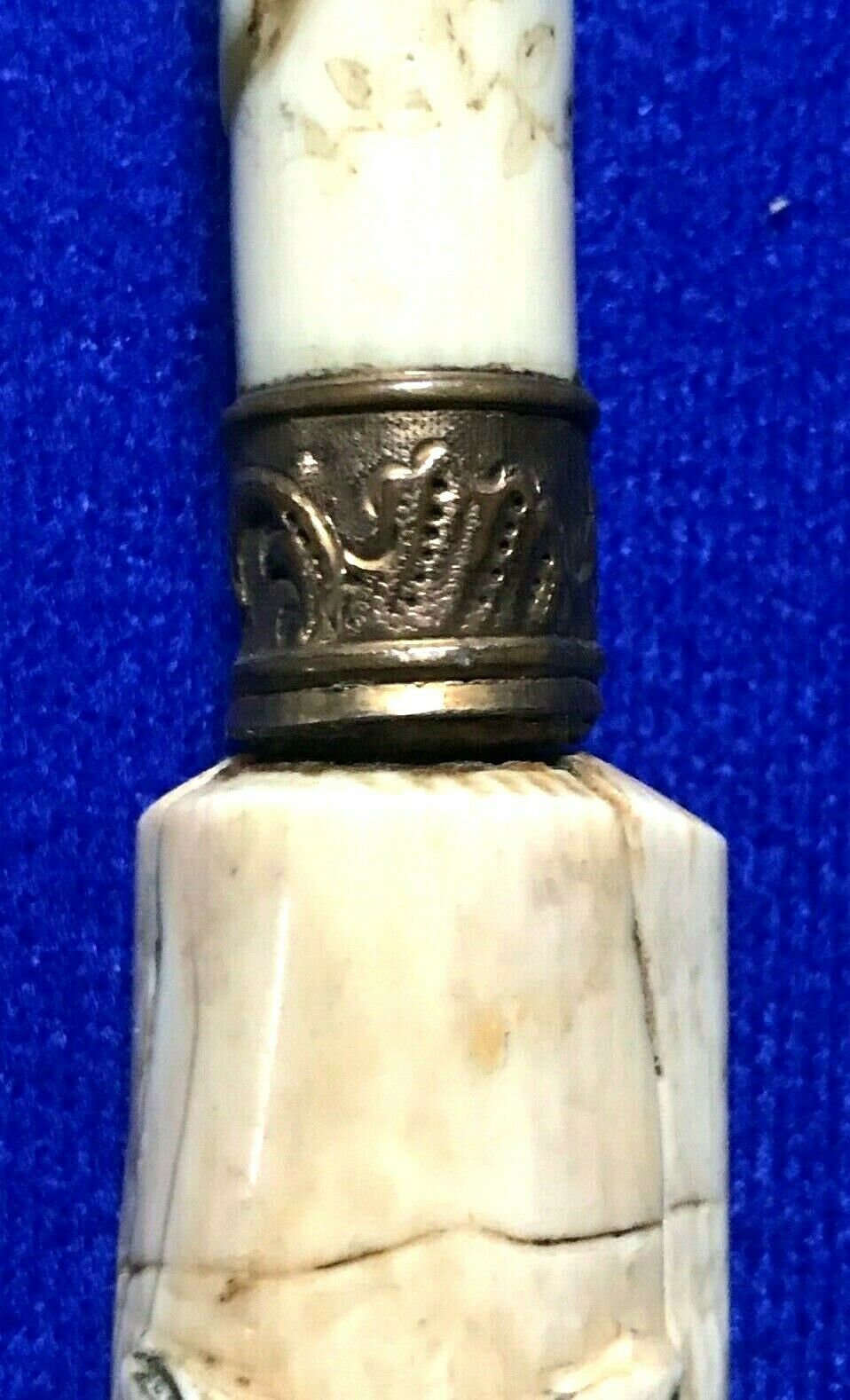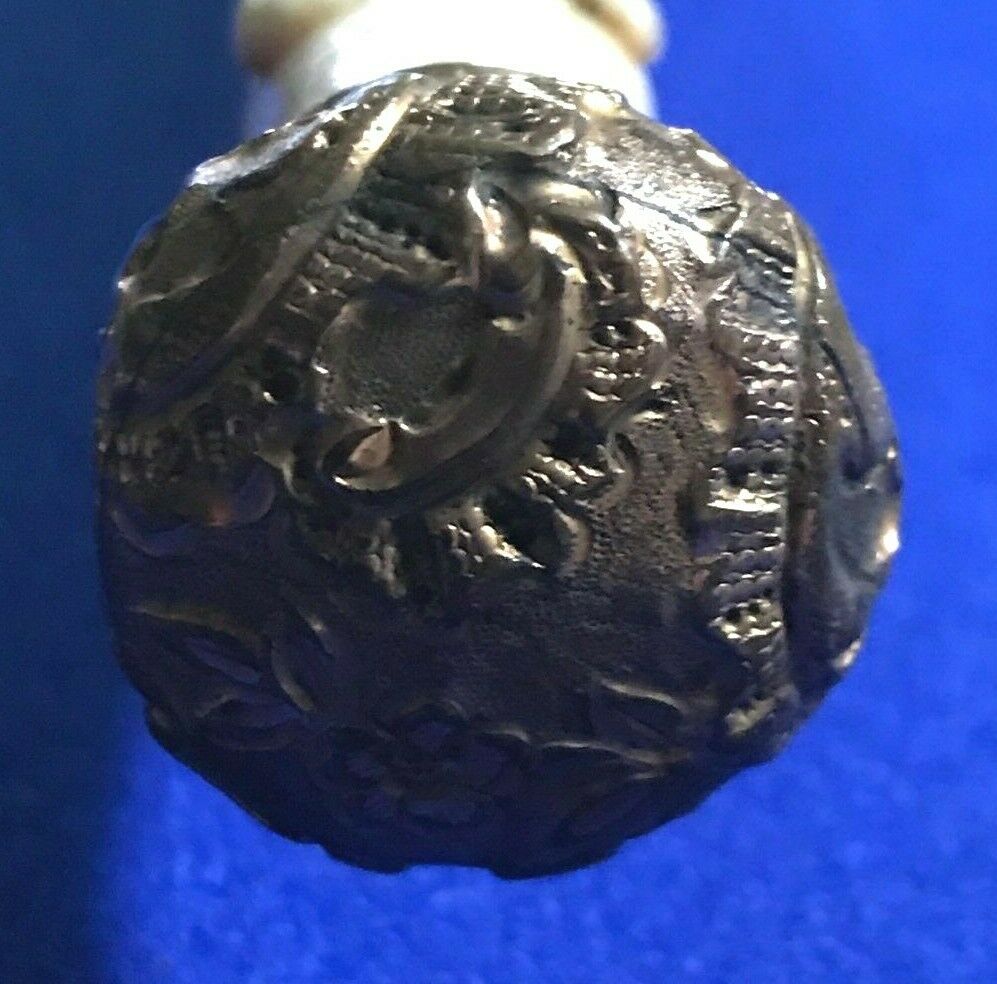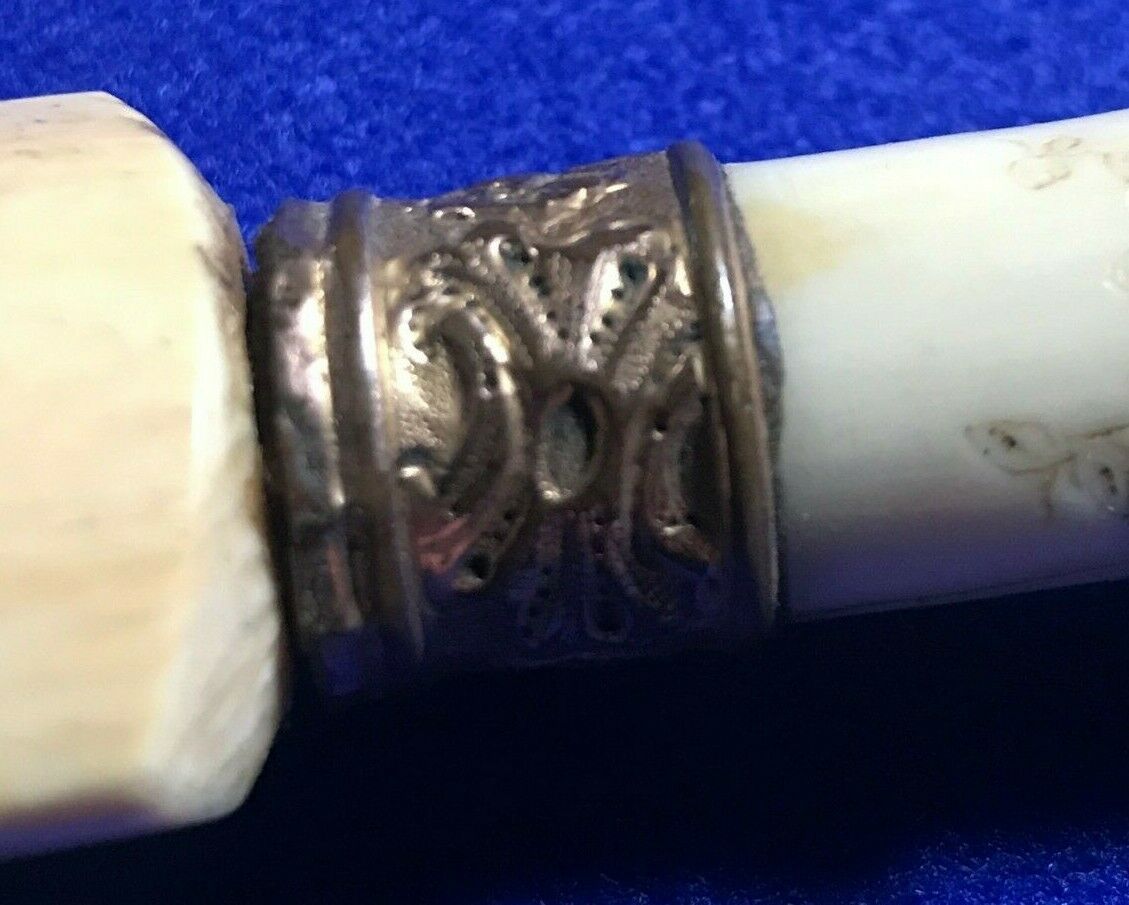-40%
Real antique bone shoehorn early 19 century from France
$ 12.67
- Description
- Size Guide
Description
This is not a ordinary shoehorn, is a real and original antique piece made from a bone is a early 19 century made of rich sculpture decorated with flowers and leaves. the top is topped with bronze delicately sculpting some accident of life is visible on the top of the piece which explains my low price.This is a rare piece that will make a beautiful display item or make a conversation piece. This can make beautiful platine for knife handle too.as
say the dictionaries, is an instrument which one uses to put on his shoe more easily.
ask question before bid if needed and don't forget to see my other
auction
for more rares, and beautiful piece from France. dimension is : 16.5 x 1.5 inches
By this definition, only those who go barefoot would not need shoehorns. In fact, the instrument whose history we propose to briefly summarize is only indispensable for certain forms of footwear; in particular the shoe itself; for the boot and the ankle boot simple tie rods are sufficient.
It is not known when the shoehorn was used. To get a rough idea of the age of this invention, one would have to know who wore the first shoes.
One thing is certain, it is that the shoehorn was known to the Romans who wore real shoes shod on the front and provided with buttresses like the shoes we still use. It is therefore not surprising that they used this absolute necessary moving utensil with this form of shoe ...
During various excavations, in Nîmes, in Pompeii, shoehorns have been found, similar in shape to those used today, but in bronze, some of which are richly adorned on their outer face.
In the Middle Ages, the shoehorn was first a strap of morocco or untanned leather. As the buttresses of the shoes grew higher and more rigid, the shoehorns of more resistant materials, horn, ivory, wood, iron or copper, developed. They received various forms and sometimes presented ingenious arrangements.
There are also, dating from the 16th century, shoehorns in embossed leather, worked in a very remarkable way and which appear to belong to Dutch art.
The different parts of the costume always influence each other. The fashion for doublets and bodies made rigid by combs, like current corsets, made flexion movements difficult and could even sometimes present danger; a comb that can break during a violent effort and cause a deep wound. So we made horn or iron shoehorns, very long, so that as with some modern button-pullers, we could put on our shoes without bending the waist.
From this period date the long animal horns, carved and engraved with care, representing allegorical subjects, sometimes accompanied by mottos.
The curious German shoehorn reproduced in our engraving is from the 16th century. It is made of engraved iron and, besides its artistic merit, is remarkable for its ingenious arrangement.
It is, in fact, terminated at its upper part by a sort of long rod clamp which is used to pull either the heel buttresses or the lateral sides of the shoe.
The engraving, very neat, shows a companion loaded with his bundle and leaving to make his tour of Germany.
This beautiful piece was once part of the famous Achille Jubinal collection. German museums have similar specimens, some of which are covered with mottos, serious or pleasant inscriptions, especially on their exterior part, the internal face in front, obviously, for the proper functioning of the utensil, to be as smooth as possible. .
From the middle of the 17th century, shoehorns ceased to be adorned and became those simple utensils, those shoe horns that we still use.
Perhaps, thanks to the artistic renaissance that has been asserting itself in recent years, we will see artistic shoehorns in ivory or metal again. It should be noted that, until the end of the 18th century, the most ordinary objects of everyday life were readily adorned, which took on the character of artistic pieces. Labor was cheap; workers with long apprenticeships possessed an individual skill which they no longer have nowadays, now that the apprenticeship is shortened, and that the machinery confined each to a narrow specialty.




















